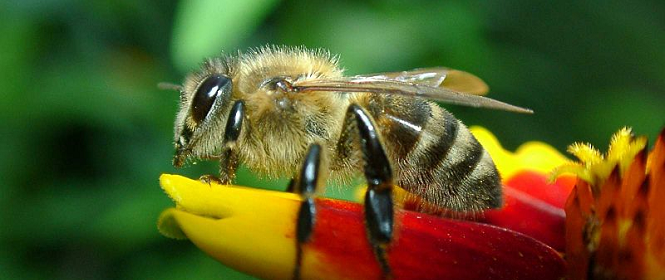Honeybee Deaths On The Rise

“Colony collapse disorder” the mysterious, decade-long die-off among honeybees, is getting worse. A survey of about 5,000 beekeepers in the U.S. has found that they’ve lost about 42 percent of their colonies over just the past year. Even more alarming is the fact that honeybee deaths spiked in the summer, when bees are usually healthiest. “What we’re seeing with this bee problem is just a loud signal that there’s some bad things happening with our agro-ecosystems,” says the study’s co-author, Keith Delaplane. The die-off probably has multiple causes, researchers say. Millions of acres of land once filled with wildflowers have been plowed and planted with corn and soybeans, reducing the bees’ pollen supply and causing some to starve.
Bees are also falling prey to a deadly parasite called the varroa mite. Pesticides widely used in the U.S., particularly neonicotinoids, disrupt bees’ nervous systems and probably also play a role. Bees are not in danger of extinction, because beekeepers respond to die-offs by splitting their surviving colonies and starting new ones. But these smaller and weaker colonies produce less honey and push bees to their limits. About one-third of all plants or plant products people consume rely on bee pollination, including nuts, produce, cotton, and coffee.

 Print
Print